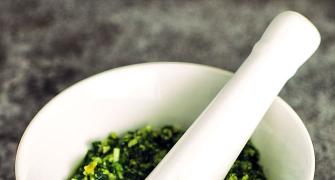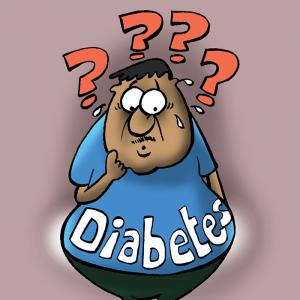Camel milk is an excellent source of iron and protein when compared to cow milk.
It also has high Vitamin B3 and good probiotics.
With the variety of nutrients camel milk has, experts feel it should be labelled a superfood.
Nikita Puri reports.
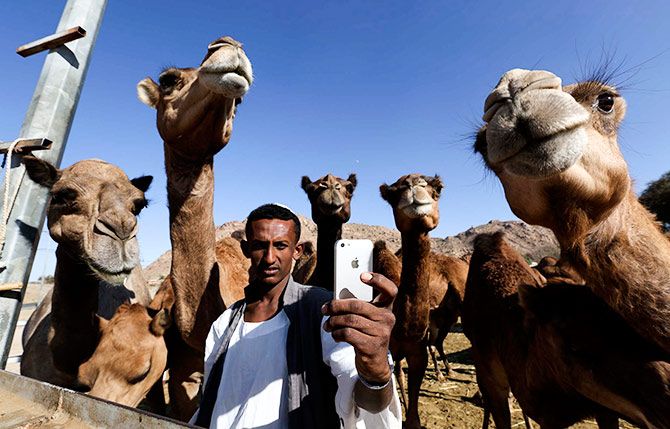
Camel milk has three times the vitamin C that cow milk has. Photograph representational.
Photograph: Mohamed Alhwaity/Reuters
Over 10 years ago, the Food and Agriculture Organisation had foreseen a great future for camel milk.
'The potential is massive,' the organisation's dairy and meat expert, Anthony Bennett had said. Camel milk is 'pure nectar' for devotees, and 'milk is money,' he claimed.
Bennett's comments, in 2006, were based on the fact that camel's milk, though in short supply even back then, had enough health benefits to motivate people to travel hundreds of kilometres for it.
A year later, Bikaner-based diabetologist Dr R P Agrawal, who has done a number of studies on camel milk, announced that in the 2,099 participants his team had monitored, there was zero prevalence of diabetes in those who consumed camel milk.
These were the people of the Raika community of north-west Rajasthan.
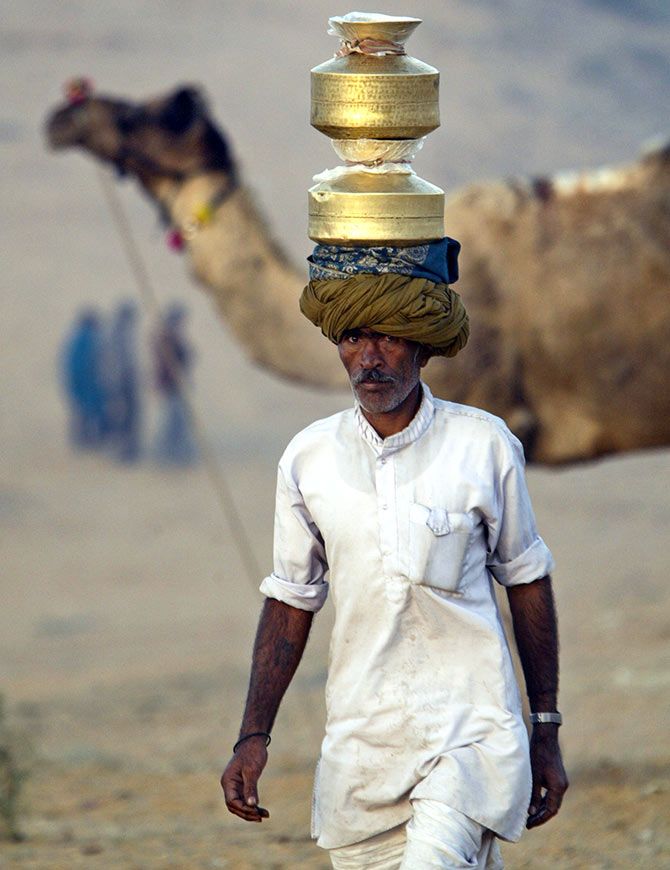
The Raikas, along with with the Rabaris, are traditionally camel herders.
Stories, passed down from one generation to another, talk of how they were born of Shiva's sweat, only to look after camels.
The camel itself, they firmly believe, came into being after Parvati asked Shiva to blow life into a five-legged creature she had fashioned out of clay (the fifth leg became the hump).
For a long time, it was only the pastoralists of Rajasthan and Gujarat, who moved across the desert with these gentle giants in tow, that believed in the medicinal qualities of camel milk. That is fast changing.
At the National Research Centre on Camel, Bikaner, scientists and nutritionists have been researching and confirming these health benefits for a decade.
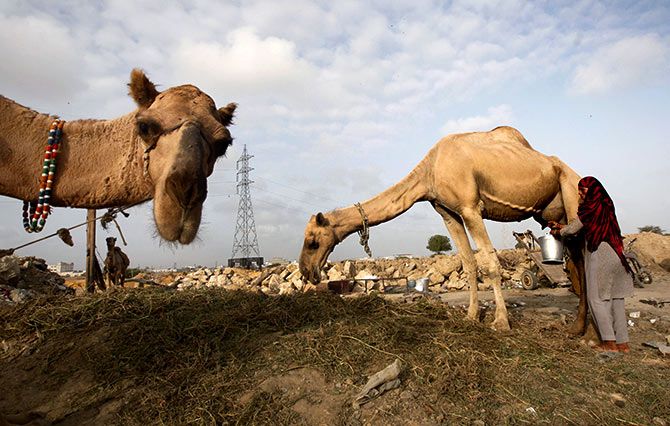
Up until now, camel milk was only locally available. But with the Food Safety and Standards Authority giving the green light for camel milk, dairy giant Gujarat Cooperative Milk Marketing Federation Ltd, which sells products under the Amul brand, will soon ensure a regular supply of camel milk.
On behalf of Amul, Kutch-based Sarhad Dairy will be the first in the country to process camel milk commercially, confirms Sarhad Diary Chairman Valamji Humbal.
"It shouldn't be long before we start processing. We'll start in Gujarat and then move on to other states," he adds.
Camel milk, says holistic nutritionist and fitness expert Luke Coutinho, contains "insulin-like" tiny molecules that mimic interaction of insulin with its receptor.
"This way insulin resistance can be improved," says Countinho.

It also has high Vitamin B3 and good probiotics.
With the variety of nutrients camel milk has, experts feel it should be labelled a superfood.
Representational photograph: Fayaz Aziz/Reuters
Advocates of camel milk also claim that its benefits aren't limited to fighting diabetes alone.
Camel milk has three times the vitamin C that cow milk has.
"Camel milk is also an excellent source of iron and protein when compared to cow milk. It also has high vitamin B3 and good probiotics. With the variety of nutrients camel milk has, it should be definitely labelled a superfood," adds Countinho.
This is also high in immunoglobulins, the key to boosting immunity. Research also shows that camel milk has the closest resemblance to human milk.
"This is undoubtedly great news for parents who are searching for alternatives for their toddlers."
Since this milk is also low in lactose, it also makes for a dependable alternative for those who can't stomach cow milk. And the fat content in a camel's milk is usually low (which incidentally is also the reason why it's taken longer for it to hit the shelves).
The list of benefits go on.
Most believe autism to be incurable, but a study conducted by Bikaner's research centre along with the Baba Farid Centre for Special Children found that every child had benefitted from switching to camel's milk.
Another study published in 2005 in the International Journal of Human Development suggested similar conclusions.
These claims are seconded in a number of reports by parents who've made the switch and seen improvements in their autistic child's behaviour, like making eye-contact and expressing emotions.
The maldharis (livestock owners) of Kutch in Gujarat depend on the therapeutic properties found in camel's milk especially when they have ailments, even tuberculosis, says Sandeep Virmani, founder trustee of a non-profit called Sahjeevan.
This non-profit is credited with organising camel breeders in the region as well and advocating for pastoralists and camel's milk.
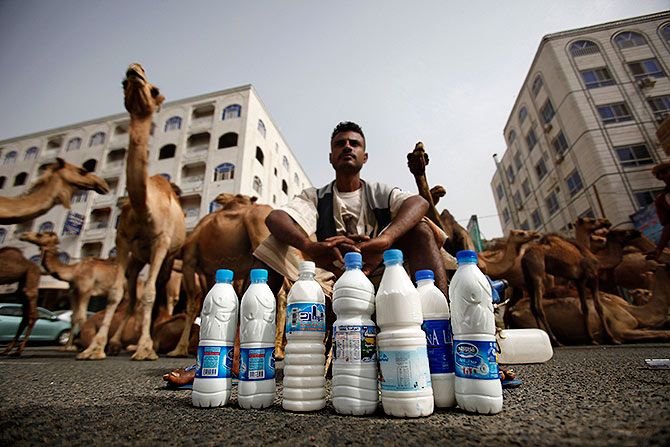
Representational photograph: Khaled Abdullah/Reuters
"The camels here eat 50 different varieties of shrubs and grasses, and thus it is believed that the nutritional value of these 50 different plants are found in their milk," shares Virmani, adding how it's no surprise that until very recently, the camel-breeding Fakirani Jat community would survive solely on camel's milk.
"We work with over 12,000 camels in Kutch, and about 350 families who breed them," says Pankaj Joshi, ecologist and executive director of Sahjeevan.
India's camel milk-processing is also significant because (unlike Australia where camels are now farmed) the traditional system of free and seasonal grazing is unlikely to change.
"This will help in maintaining the ecological balance of the region and promoting sustainability," adds Joshi.
The belt that Amul's Sarhad Diary will source its milk from has two kinds of camels. One is the Katchchi (from Kutch) breed, the other is the endangered Kharai: The latter is a 'swimming camel' that also feeds on mangroves.
Though the Kharai's milk is often "saltier" than the Katchchi's because of its diet, camel milk over all is not as sweet as cow.
The 'healthier' tag thus comes with an acquired taste, but perhaps our days of ordering camel milk lattes are closer than we think.




